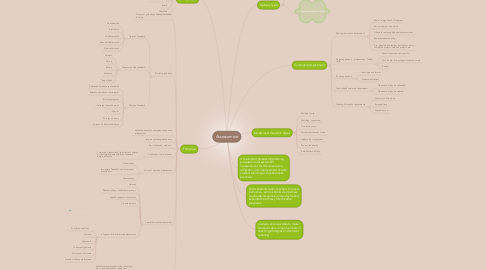
1. Formative
1.1. Process of gathering evidence of student learning
1.2. Providing feedback
1.2.1. Types of Feedback
1.2.1.1. Goal-directed
1.2.1.2. Scaffolded
1.2.1.3. Self-Referenced
1.2.1.4. Standards-Referenced
1.2.1.5. Norm-referenced
1.2.2. The nature of the feedback
1.2.2.1. Amount
1.2.2.2. Timing
1.2.2.3. Mode
1.2.2.4. Audience
1.2.2.5. Type of task
1.2.3. Effective Feedback
1.2.3.1. Relates performance to standards
1.2.3.2. Relates performance to strategies
1.2.3.3. Indicates progress
1.2.3.4. Indicates corrective action
1.2.3.5. Specific
1.2.3.6. Focuses on errors
1.2.3.7. Focuses on effort attributions
1.3. Adjusting instruction strategies to enhance achievement
1.4. Learners can change behaviors
1.5. E.g., discussion, quiz, etc.
1.6. Continuing circular process
1.6.1. Formative Assessment Cycle Gather Evidence of Learning Evaluate evidence Feedback Adjust instruction
1.7. Informal Formative Assessment
1.7.1. Observation
1.7.2. Immediate Feedback and instructional adjustments
1.7.3. Spontaneous
1.8. Formal Formative Assessment
1.8.1. Quizzes
1.8.2. Planned activity – individual or groups
1.8.3. Specific sequence of activities
1.8.4. Pre-assessments
1.8.5. 6 Types of formal formative assessment
1.8.5.1. Structured exercises
1.8.5.2. Pretests
1.8.5.3. Homework
1.8.5.4. In class assignments
1.8.5.5. Quizzes and Unit tests
1.8.5.6. Classroom Response Systems
1.9. Interim Assessments (Benchmark)
1.9.1. Periodic testing throughout the school year E.g., every six weeks or chapter test
1.9.2. Low-level/ little or no student feedback
1.9.3. More formal style using projects, written assignments, and tests
2. Scoring Types
2.1. Human scoring
2.2. Distributed scoring
2.3. Automated scoring
2.4. Rubric
2.5. Checklists
3. Is the shared process of gathering purposeful and systematic measurement for documentation, reflection, and improvement of both student learning and institutional practices
4. helps students learn, teachers improve instruction, administrators decide how to allocate resources, and policymakers evaluate the efficacy of education programs
5. analyzes and uses data to make decisions about improvements in teaching strategies and student learning
6. Summative Assessment
6.1. Planning Summative Assessment
6.1.1. End of a large chunk of learning
6.1.2. Review what you want to do
6.1.3. Criteria for ensuring high-quality assessment
6.1.4. Representative sampling
6.1.5. E.g., standardized testing, final exams, major cumulative projects, research projects, etc.
6.2. Preparing students – Assessment – Taking skills
6.2.1. Teach assessment taking skills
6.2.2. Test length, format, types of questions, etc.
6.2.3. Review
6.3. Preparing students
6.3.1. Item type and format
6.3.2. Assessment anxiety
6.4. Conducting Summative Assessments
6.4.1. When should they be scheduled
6.4.2. When should they be created
6.5. Creating Summative Assessments
6.5.1. Assessment Directions
6.5.2. Arrange Items
6.5.3. Physical Layout
